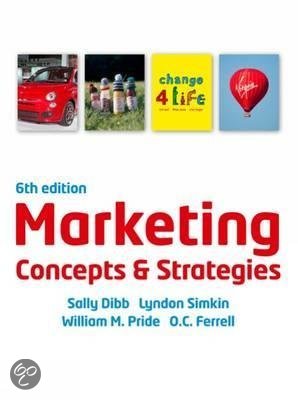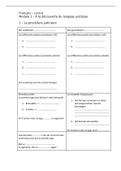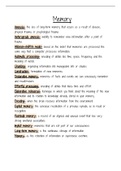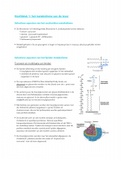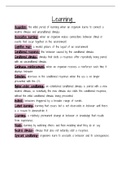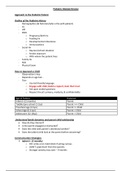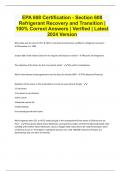,Lecture 1 Course introduction
Marketing is everywhere, and you are constantly being marketed to. This much is clear. People also
apply marketing techniques in their daily lives, including yourself. Think for example of your social media
platforms.
What exactly is marketing? Some definitions:
- AMA (2007): Marketing is the activity, set of institutions and processes for creating, communicating,
delivering and exchanging offerings that have value for customers, clients, partners and society at large
- Dibb et al. (2019): Marketing consists of individual and organizational activities that facilitate and
expedite satisfying exchange relationships in a dynamic environment through the creation, distribution,
promotion and pricing of goods, services and ideas.
both focus on exchange
only AMA focusses on creating value, but note that this is essential to this course as well.
Marketing is driven by wants and needs, and since they can be quite diverse from person to person,
marketing is a complex and often difficult process. Market research is performed to develop the wants
and needs of the market, and what optimal marketing strategies could be Implemented.
The 4p’s is a concept which shows 4 different domains of market research a marketing plan should
consider:
- Product: who want to buy the product you are offering and what should its (marketed) features be?
- Place: Where and when should exchange take place? ‘Selecting, developing and managing distribution
channels
- Price: Setting and adapting prices and managing price perceptions (higher price gives the feeling of
higher quality)
- Promotion: Selecting communication means & content for the right customers at the right time
This lecture is really more of an introduction than anything else, and doesn’t feature a lot of exam
material.
,Lecture 2 The Company & Environment
Why do companies have mission and vision statements?
- to help guide the different departments in a company (e.g. marketing, company culture etc.)
- without mission/vision statements, how will a company develop its offering to the customer? It is like a
ship without destination
Example: McDonalds’ mission is “to make delicious feel-good moments easy for everyone”. Meanwhile,
this differs from their main business. Opposite to what you might believe, this is actually not food
industry but real estate, as McDonalds owns most of its locations itself.
One thing you need to take into account is that mission and vision statements guide people towards your
company, but can also guide people away from it. Take for example a company like Spotify that suddenly
starts to sell pizza as well. You don’t know them for pizza, you know them for the music platform and for
bringing together music creators and listeners. Statements allow companies to express what they can
bring to the table.
The objectives and strategies of a company help direct the efforts a company takes across their offerings
and markets. An Ansoff Matrix shows the differentiation between 4 types of strategies, based on the
state of the market and the state of the product:
- creating an existing product in an existing market is called market penetration
(e.g. Starbucks creates a new size of cup)
- creating an existing product in a new market is called market development
(e.g. Coca-Cola adds a Zero-flavor that appeals more to men)
- creating a new product in an existing market is called product development
(e.g. Andrelon creates a new flavor of shampoo with tropical smell)
- creating a new product in a new market is called diversification
(e.g. Jumbo acquires the Hema company to sell household products like pens)
The more new things a company tries out, the riskier the undertaking is. Market penetration is not risky,
market and product development is more risky and diversification is the riskiest. See also the figure
, down below.
Managers decide using tools and frameworks to address and view different aspects of the marketing
strategy decision. A couple of examples:
- Bird’s eye view (internal/external): Using a SWOT analyses to observe the strengths and weaknesses of
your company internally, as well as the opportunities and threats from the external market
- marketing environment (external): Using a PESTLE analysis to observe, political, economic, social,
technological, legal and environmental issues concerning your company and product. Additionally, you
could also use Porter’s 5 forces model
- Growth share across offering (offering level): Using a BCG matrix to observe the market share and
profit margin and determine the state of your offered product: Question mark, star, cash cow or dog.


